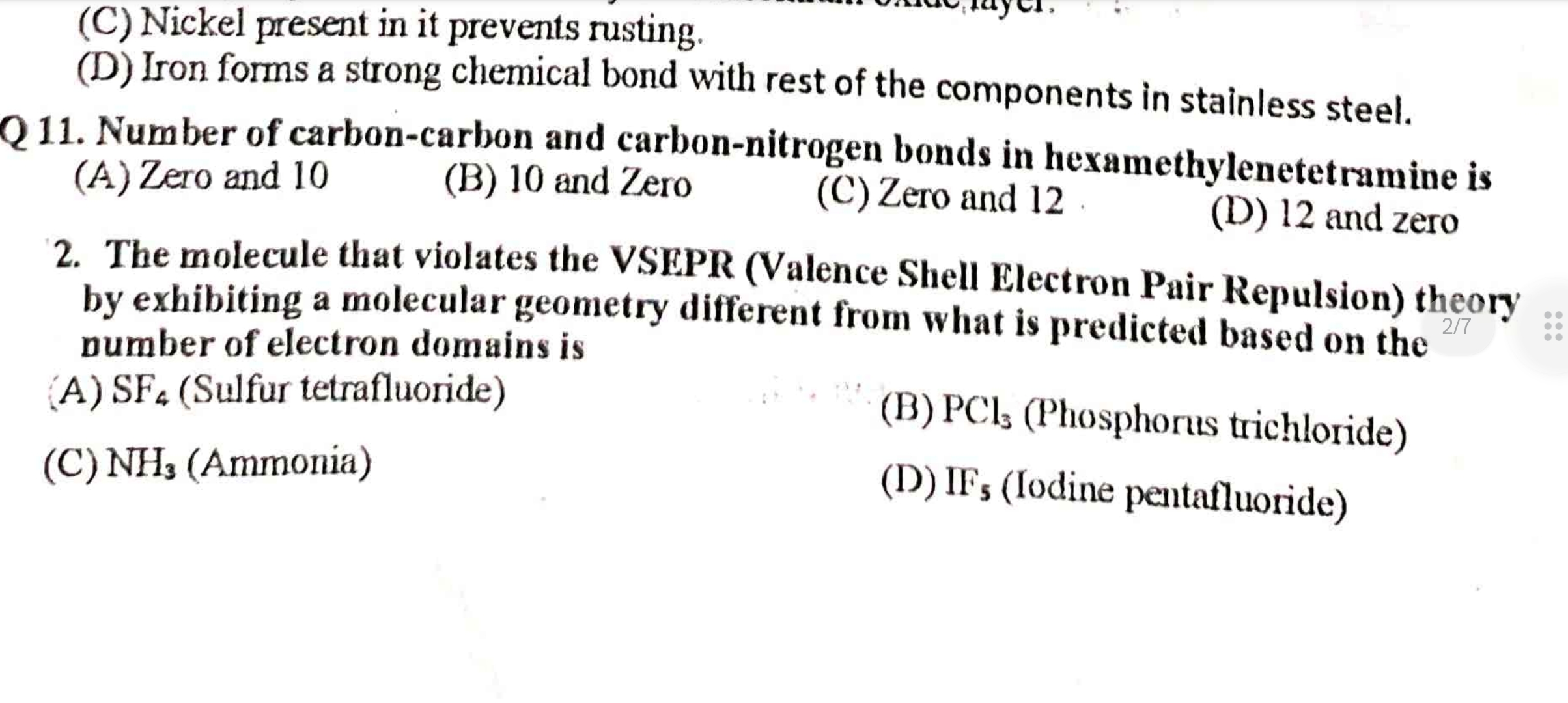Number of carbon-carbon and carbon-nitrogen bonds in hexamethylenetetramine is: (A) Zero and 10 (B) 10 and Zero (C) Zero and 12 (D) 12 and zero. The molecule that violates the VSEP... Number of carbon-carbon and carbon-nitrogen bonds in hexamethylenetetramine is: (A) Zero and 10 (B) 10 and Zero (C) Zero and 12 (D) 12 and zero. The molecule that violates the VSEPR theory is: (A) SF4 (B) PCl3 (C) NH3 (D) IF5.

Understand the Problem
The question is asking for the number of carbon-carbon and carbon-nitrogen bonds in hexamethylenetetramine, a compound used in various applications including resins and adhesives. Additionally, it asks about the molecular geometry of a compound that violates the VSEPR theory, needing identification of which given molecule fits this description.
Answer
Zero and 12; SF4
The number of carbon-carbon bonds is zero, and carbon-nitrogen bonds is 12 in hexamethylenetetramine. The molecule that violates VSEPR theory is SF4.
Answer for screen readers
The number of carbon-carbon bonds is zero, and carbon-nitrogen bonds is 12 in hexamethylenetetramine. The molecule that violates VSEPR theory is SF4.
More Information
Hexamethylenetetramine has no carbon-carbon bonds, only carbon-nitrogen bonds due to its cage structure. SF4 has a seesaw shape due to the presence of a lone pair on the sulfur, which leads to a geometry not predicted by simple VSEPR.
Tips
A common mistake is to assume hexamethylenetetramine contains carbon-carbon bonds; it doesn't. For VSEPR, misunderstanding the effect of lone pairs on molecular shape is common.
Sources
AI-generated content may contain errors. Please verify critical information